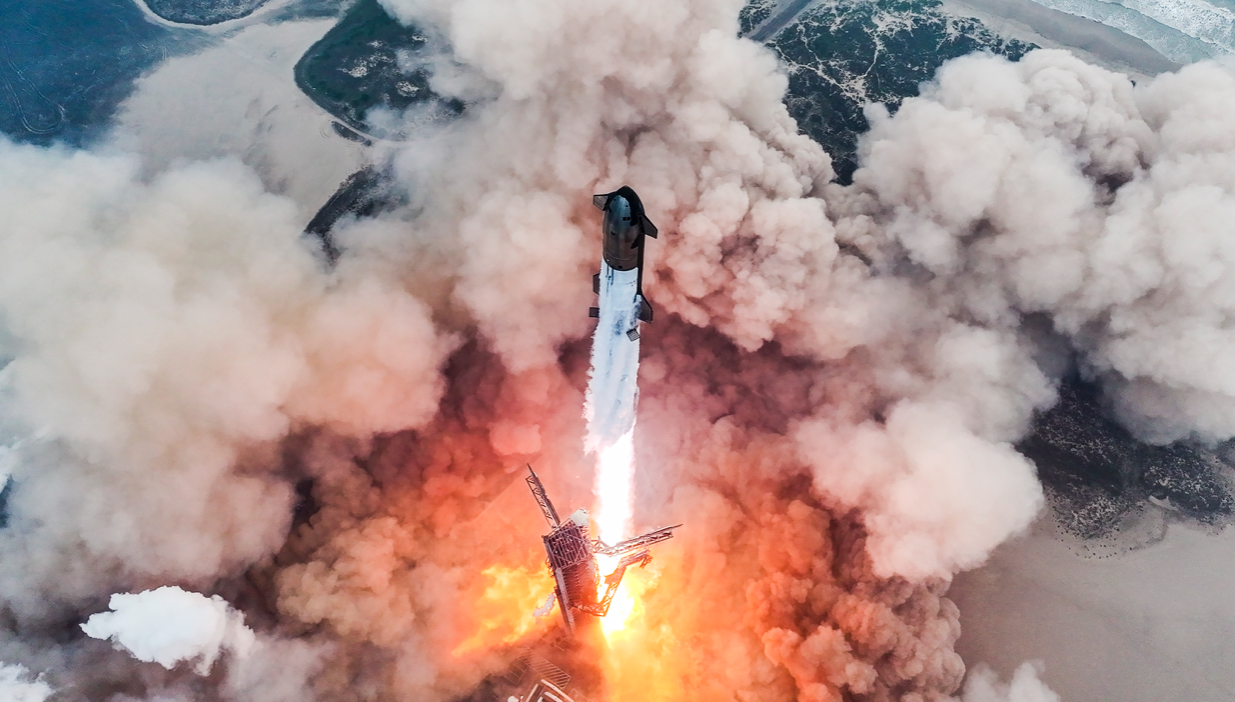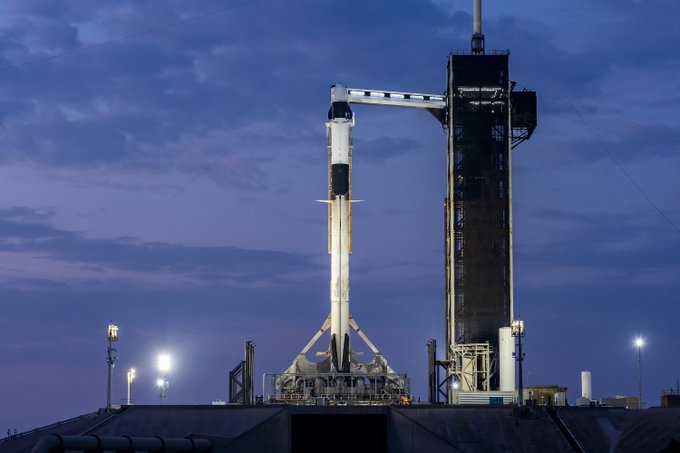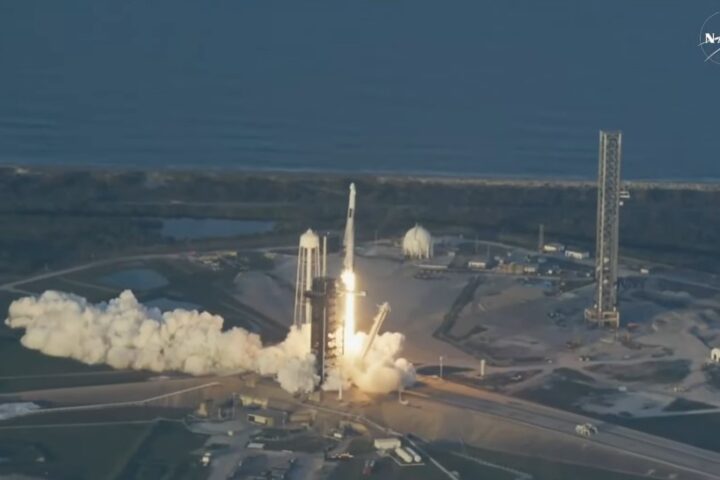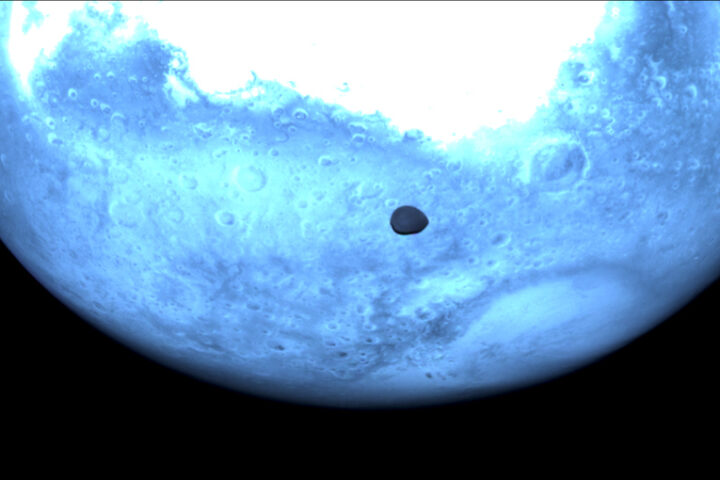Starship, SpaceX’s enormous rocket prototype that could send humans to Mars, successfully achieved its first ocean splashdown during its fourth flight test on Thursday, June 6th.
“Splashdown confirmed! Congratulations to the entire SpaceX team on an exciting fourth flight test of Starship!” the company posted on X after a live broadcast showed the rocket landing in the ocean.
The most powerful launch system ever built, vital for NASA’s plans to send astronauts back to the Moon and for SpaceX CEO Elon Musk’s hopes to someday colonize Mars, had taken off from Starbase in Boca Chica, Texas, at 07:50 local time (12:50 GMT).
Three previous attempts ended poorly for the rocket, which caught fire in flight, but the company maintains that this was an acceptable cost within its rapid development approach of trial and error.
“The payload for these flight tests is data. Building upon what we achieved during Starship’s third flight test, our primary goal today is to get through the extreme heat of reentry,” SpaceX posted on X.
A few minutes into the flight, the Super Heavy booster, used to propel the spacecraft into orbit, separated as planned and fell back to Earth. The booster then ignited its engines one last time to slow the impact just before splashdown in the Gulf of Mexico, achieving a new milestone and prompting cheers at SpaceX’s mission control.
Since then, SpaceX says it has made several software and hardware updates. Its Super Heavy booster produces 16.7 million pounds (74.3 meganewtons) of thrust, nearly double that of the world’s second most powerful rocket, NASA’s Space Launch System, though the latter is already certified, while Starship is still in development.
Similar Post
The flight path was similar to that of the third test, which took place in March and in which Starship flew for 49 minutes before catching fire upon re-entering the atmosphere over the Indian Ocean.
SpaceX’s strategy of real-world testing instead of lab tests has paid off in the past. Its Falcon 9 rockets have become workhorses for NASA and the commercial sector; its Dragon capsule sends astronauts and cargo to the International Space Station, and its Starlink Internet satellite constellation now covers dozens of countries.
Designed to be eventually fully reusable, Starship measures a total of 121 meters in height. At nearly 122 meters tall, the Starship launch system is taller than the Saturn V that sent Neil Armstrong to the Moon. SpaceX has a multi-billion dollar contract with NASA for lunar landings with the Starship. NASA is closely monitoring SpaceX’s progress with each Starship launch, aiming to land people on the Moon in 2026. However, that timeline is likely to be delayed.
The unmanned flight was scheduled to last more than an hour. But what follows is a key challenge: whether Starship can withstand the extreme pressure and heat of its return through Earth’s atmosphere, a fall it did not survive in the last test mission.
For this test flight, the company hopes to continue advancing the Starship’s progress beyond the three previous tests. While the goal, as usual, is to send the Starship to near-orbital speeds in space, the company is now primarily focused on bringing the spacecraft back intact through Earth’s atmosphere after the short trip. This capability will be crucial if SpaceX hopes to reuse the vehicle in the future.
However, SpaceX does not plan to fully recover the Starship on this flight. If the spacecraft survives the atmospheric fall, it will splash down in the Indian Ocean.
The powerful SpaceX Starship rocket launched on its fourth major test flight, as the Elon Musk-led company works to make the spacecraft operational and ready for regular space travel. Starship and its Super Heavy booster took off from SpaceX’s facilities in the far south of Texas at 7:50 a.m. local time on Thursday.
There have only been four launches, and it is no surprise now to say that the fourth test launch of the Starship was successfully conducted, where the gigantic SpaceX spacecraft took off smoothly from its base.
Upon reaching orbit, the Super Heavy shut down its engines two and a half minutes after liftoff, separating from the upper stage and performing its characteristic flip maneuver to return to Earth. In the process, it ejected its hot staging ring, a maneuver designed by SpaceX to reduce the rocket’s weight before landing.
The next step was crucial: performing a controlled splashdown in the Gulf of Mexico, a stage that has been successfully achieved in its fourth flight, with the booster descending rapidly but stopping just a few meters above the water, something it failed to achieve in its third launch despite losing one of its boosters.
The flight of the second stage was carried out almost optimally. Although the Starship managed to re-enter, it did so with some complications, such as one of its flaps beginning to disintegrate. However, the spacecraft reached the Indian Ocean without losing its control capability, and although it couldn’t be seen through the camera lens, the Starship survived after descending belly-down and performing its flip maneuver, which we hadn’t seen since the SN15 in 2021, stopping above the sea to finally make a controlled splashdown in the water.
But time is running out for SpaceX to be ready for NASA’s planned return of astronauts to the Moon in 2026, using a modified Starship as a landing vehicle. To reach that goal, SpaceX will first need to place a Starship in orbit and then refuel it with multiple “tanker Starships” for its onward journey, a complex engineering feat yet to be achieved. At least one SpaceX fan has grown tired of waiting.
However, Japanese billionaire Yusaku Maezawa announced this week that he canceled a planned trip around the Moon on Starship with a team of artists because he has no idea when it might happen.

















